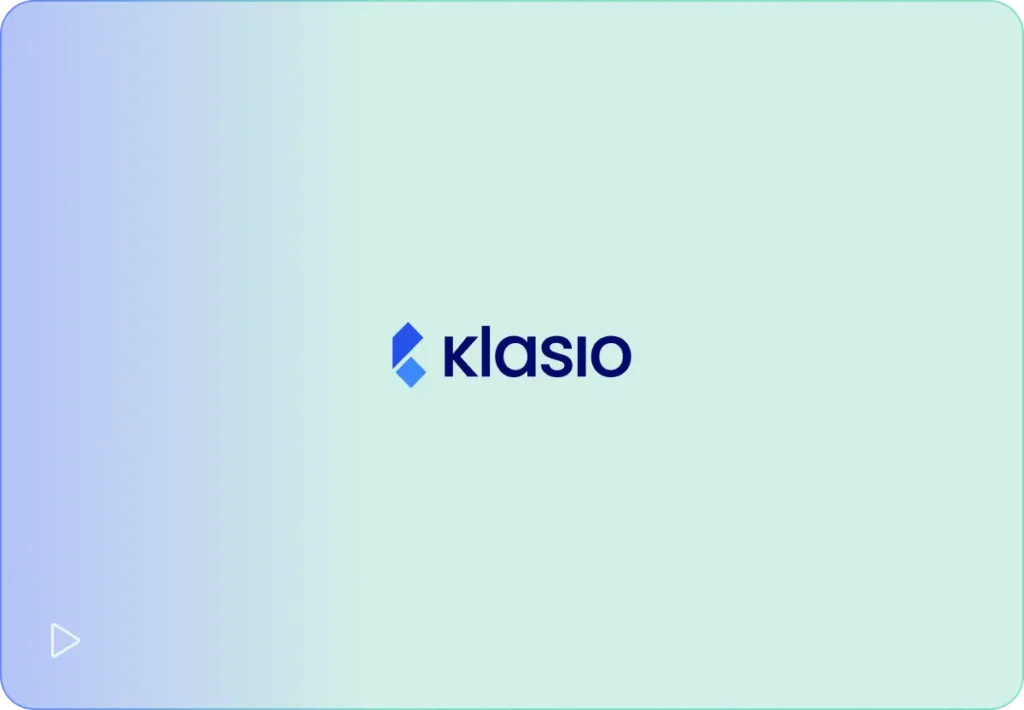Klasio vs LearnDash
With Klasio, there’s no complicated setup—and you won’t need to deal with hosting, plugins, or technical maintenance. You get a clean interface, faster course creation, and a free mobile app with every Klasio plan.
The Problems with LearnDash
You’re Stuck Fixing Instead of Teaching
With LearnDash, you’ll run into plugin conflicts, theme bugs, and WordPress updates that break your course site. Every fix takes time, and one issue often leads to another. If you want things to run smoothly, be ready for constant maintenance, troubleshooting, and a lot of hands-on work—all by yourself. All this extra work isn’t just a hassle—it pulls your focus away from teaching.

Complex Pricing
LearnDash offers yearly pricing on a per-site basis. Also, you will have to buy essential features like “instructor roles” as an add-on.
No Mobile App
LearnDash doesn’t offer a mobile app for its end users. So, your students can’t access your course materials from their phones.
No Built-in Protection
With LearnDash, you handle your own hosting, SSL, and WordPress updates. No built-in security or guaranteed uptime like Klasio.
Why Klasio is a Better Alternative to LearnDash?
Instant, Tech-Free Setup
Klasio is a fully hosted platform designed for non-technical instructors. You can sign up and launch a course in minutes without any coding or WordPress knowledge.
Affordable Pricing with Flexible Plans
Klasio’s pricing plans are more affordable than LearnDash’s, especially for smaller course creators. Klasio offers a free plan and affordable paid options starting at just $29 per month.
Better Learning Experience
Because Klasio is a managed SaaS, you get built‑in reliability and security. The platform provides SSL, built-in cloud storage, and high uptime by default.
Greater Reliability and Security
Because Klasio is a managed SaaS, you get built‑in reliability and security. The platform provides SSL, built-in cloud storage, and high uptime by default.

See How Klasio Compares With LearnDash
Here’s a quick breakdown of how Klasio stacks up against LearnDash across essential features.
| Feature | ||
|---|---|---|
| Domain and Hosting | Not required | Required |
| Storage | Built-in | Required |
| Course Website | Done for You | Do it Yourself |
| Live Class | Yes | Requires plugins |
| Digital Downloads | Yes | Requires integration |
| Webinars | Yes | Requires plugins |
| Adding Instructors | Free | Paid add-on |
| Free Mobile App | Yes | No |
| Coupons | Yes | Requires plugin |
| Multilingual | Upcoming | Requires plugin |
| Payment Gateway | Built-in | Requires plugin |
| Analytics | Built-in | Requires plugin |
In-Depth Feature Comparison
Klasio vs LearnDash:
Which one is right for you?
Course Creation and Resource
The main difference between Klasio and LearnDash is that Klasio is SaaS, and LearnDash is a WordPress plugin. That means, before you start creating your course with LearnDash, you will need a domain, hosting, and a WordPress website, among other things.
As for Klasio, it’s 10 times easier to get started; you get a domain, hosting, SSL, and a website as soon as you sign up. All you have to do is create your course.
So, if you are not tech-savvy, Klasio is a better option than LearnDash. Even if you are tech-savvy, Klasio will manage and handle everything for you, so you can focus on your course business.
When it comes to course creation, Klasio and LearnDash are on par with each other. However, Klasio lets you combine live and recorded ones, webinars, and digital downloads, whereas LearnDash focuses primarily on self‑paced, recorded courses without native support for live sessions.
Klasio and Learndash both offer AI-assisted course curriculum builders, but Learndash goes a step further by offering AI-assisted quiz creation. Learndash also offers memberships (with a plugin), bundles, and subscriptions, while Klasio has these features in their pipeline.
Both of these LMSs have drip content, assignments with auto-grading features, certificates, gamification, and more.
Where Klasio really outshines Learndash is in the staff. In LearnDash, you don’t get any instructors by default; you have to pay extra. But in Klasio, you can get unlimited instructors on the business plan.
| Feature | ||
|---|---|---|
| Domain and Hosting | Not required | Required |
| Storage | Built-in | Required |
| Course Website | Done for You | Do it Yourself |
| Course Bundles | Upcoming | Yes |
| Subscriptions and memberships | Upcoming | Yes |
Learning Experience
Klasio is designed to provide your students with a complete and fulfilling learning experience.
For starters, your students get a free mobile app so they can access your course. This free app is available for your students on both Android and iOS, regardless of your pricing tier. Also, if you want, you can order your own custom-branded app for a small fee.
You can also encourage your learners to complete your courses using Klasio’s gamification and leaderboard. Once they complete their courses, they get their certificates, and they can leave reviews about their experiences.
Similarly, LearnDash offers gamification, certification, and badges, but no mobile apps. However, you can get a custom app through BuddyBoss. That’s why, compared to LearnDash, you can provide your students with a better learning experience with Klasio.
| Feature | ||
|---|---|---|
| Free Mobile App | Yes | No |
| Custom Mobile App | Yes | 3rd party only |
| Certificates | Yes | Yes |
| Gamification | Yes | Yes |
| Leaderboards | Yes | Yes |
Sales and Marketing
Klasio comes with a full suite of built-in sales and marketing tools; no plugins required.
You can accept payments through Stripe, PayPal, or even custom/manual gateways, and offer discounts using easy-to-create coupon codes. Klasio also supports selling digital products and webinars alongside your courses.
Email marketing is included via Mailchimp integration, even on the free plan. So, you can automate welcome messages, promotions, or reminders directly from the dashboard.
LearnDash, on the other hand, requires external plugins for nearly every marketing function.
To accept payments, you’ll need to integrate WooCommerce or Easy Digital Downloads. Email automation must be handled through plugins like Mailchimp or ConvertKit, and coupons are managed via WooCommerce.
While it supports memberships, subscriptions, and upsells, each of these features needs a separate plugin or complex setup. Analytics are limited unless you install the ProPanel add-on.
That’s why, when it comes to simplicity and all-in-one marketing functionality, Klasio offers a more streamlined and beginner-friendly experience than LearnDash.
| Feature | ||
|---|---|---|
| Payment | Built-in | Requires plugins |
| Analytics | Built-in | Requires plugins |
| Discount Coupons | Built-in | Requires plugins |
| Memberships | Upcoming | Requires plugins |
| Subscriptions | Upcoming | Yes |
Third-party Integrations
When it comes to third-party integrations, LearnDash really stepped up its game compared to Klasio. Because LearnDash is a WordPress plugin, it has access to WordPress’s huge plugin library.
On the other hand, Klasio has a decent number of third-party tools that you can directly integrate through the Klasio app, which makes course creation and selling easier. For instance, Klasio offers Mailchimp integration for email marketing, Google Auth for security, Google Tag Manager, Google Analytics for analytics, Google Meet and Zoom integration for live classes, and more.
Also, it is easier to collect your payments through Klasio because we offer a lot of payment gateways like PayPal, Stripe, SSLCommerz, and more. If you want, you can add your local payment gateways to Klasio.
While Klasio’s third-party tools are enough and more integrations are on the way, it doesn’t have access to WordPress’s huge plugin library.
| Feature | ||
|---|---|---|
| Live Class Tools | Yes | Yes |
| Payment Gateways | Yes | Yes |
| Email Marketing | Yes | Yes |
| Analytics & Tracking | Yes | Yes |
| Automation Tools | Upcoming | Yes |
| Affiliate Tools | Upcoming | Yes |
Pricing
Klasio offers a flexible and transparent pricing model that caters to all kinds of course creators, from beginners to growing businesses.
It starts with a generous free plan, followed by monthly subscriptions at $29, $59, and $149, all of which include core features without hidden upsells. All plans come with 0% commission.
What truly sets Klasio apart is its lifetime pricing option, with plans at $99, $199, and $349 one-time, making it incredibly cost-effective for long-term creators.
LearnDash, on the other hand, uses a traditional licensing model as a WordPress plugin. It charges $199/year for 1 site, $399/year for 10 sites, and $799/year for unlimited sites.
While you get access to core LMS features, most advanced functionality, like memberships, email marketing, advanced analytics, and ecommerce, requires additional paid plugins, increasing both cost and setup complexity. You’re also responsible for separating hosting and any technical maintenance.
That’s why, from a value standpoint, Klasio is far more affordable, predictable, and beginner-friendly, while LearnDash can become significantly more expensive over time, especially once you factor in hosting, plugins, and developer costs.
Savings: Klasio vs LearnDash
Let’s compare how much you can save every month by choosing Klasio over LearnDash.
| Plans | Savings/year | ||
|---|---|---|---|
| Starter vs 1-Site License | $99 one-time | $199 / year | ~50% |
| Growth vs 10-Site License | $199 one-time | $399 / year | ~50% |
| Business vs Unlimited-Site License | $349 one-time | $799 / year | ~56% |
What Makes Klasio a
User Favorite?

Ehsan Riyadh
CEO, Arraytics
I was really happy to see I could use my own payment gateway. Didn’t have to switch to something new. Klasio saved me a lot of trouble.

Shouri Mitra
Managing Director, theopusway
I ABSOLUTELY LOVE WHAT KLASIO IS ❤️. It’s super smooth – slick – functions insanely – and this is the simplest yet most elegant course platform I’ve seen.

Hasan Zubayer
Founder, Projukti Team
The student app and simple registration were game-changers for my team. It finally felt like we could give our learners a seamless experience without us taking any technical headaches.

M. Mahbubur Rahman
CTO, iVive Labs
I have used & evaluated a number of LMS for different purposes. Klasio would stand out for sure, esp the AI driven course designer – saves a lot of time.

Waldek Reclik
Coordinator, MTS Rybnik Football Academy
“Klasio UX made a huge impression on me. I have used several LMS (including Braincert, Academy LMS, Masteriyo) and no system offers such an easy, fast and efficient workflow). I want to quickly edit a course or create a new one, I don’t wonder for 20 seconds where and how it was – interface is so intuitive and perfectly balanced. Love it.”

Ahmed Shamim Hassan
Founder, Megaminds Technologies
We initially aimed to build our own LMS but found it challenging. Klasio’s intuitive platform and robust features simplified everything.

Fahim Abdullah
Founder, Ononno Solutions
Any time I had an issue, the Klasio support team, even the CEO, got back to me fast. They actually listened and implemented what I needed.
See How Klasio Stacks Against LearnDash Live
Experience a side‑by‑side walkthrough of core features, pricing, and user workflows—live—so you can see firsthand why Klasio outperforms LearnDash.

Compare with
VS
VS
VS
VS
VS
VS